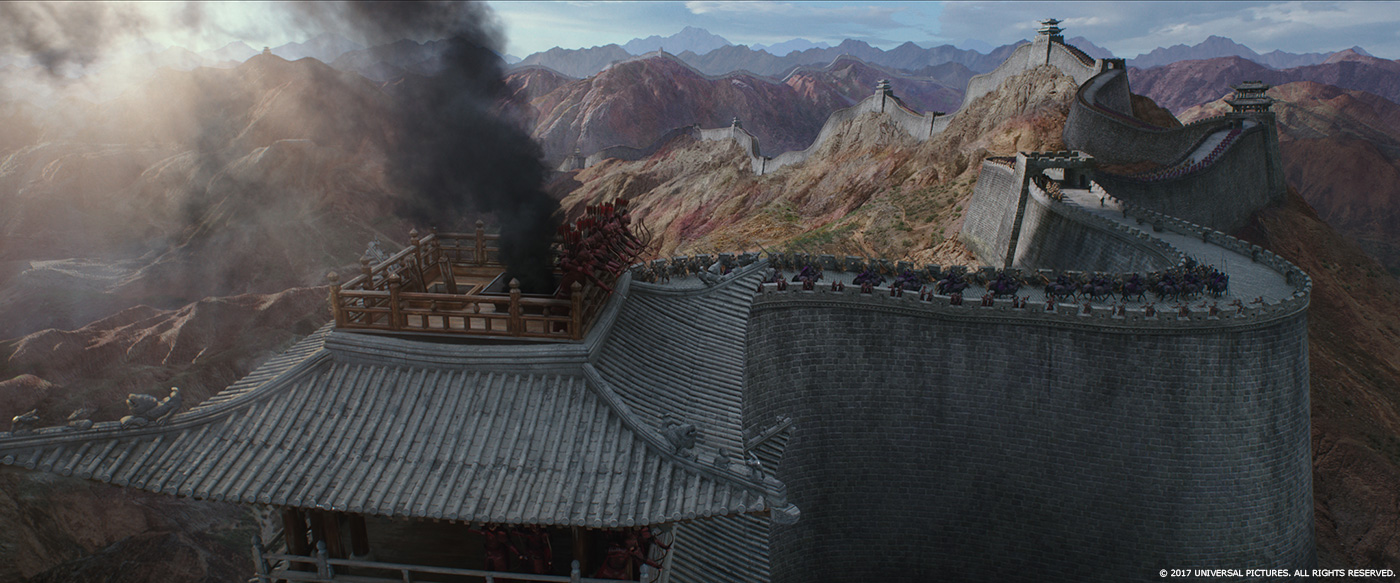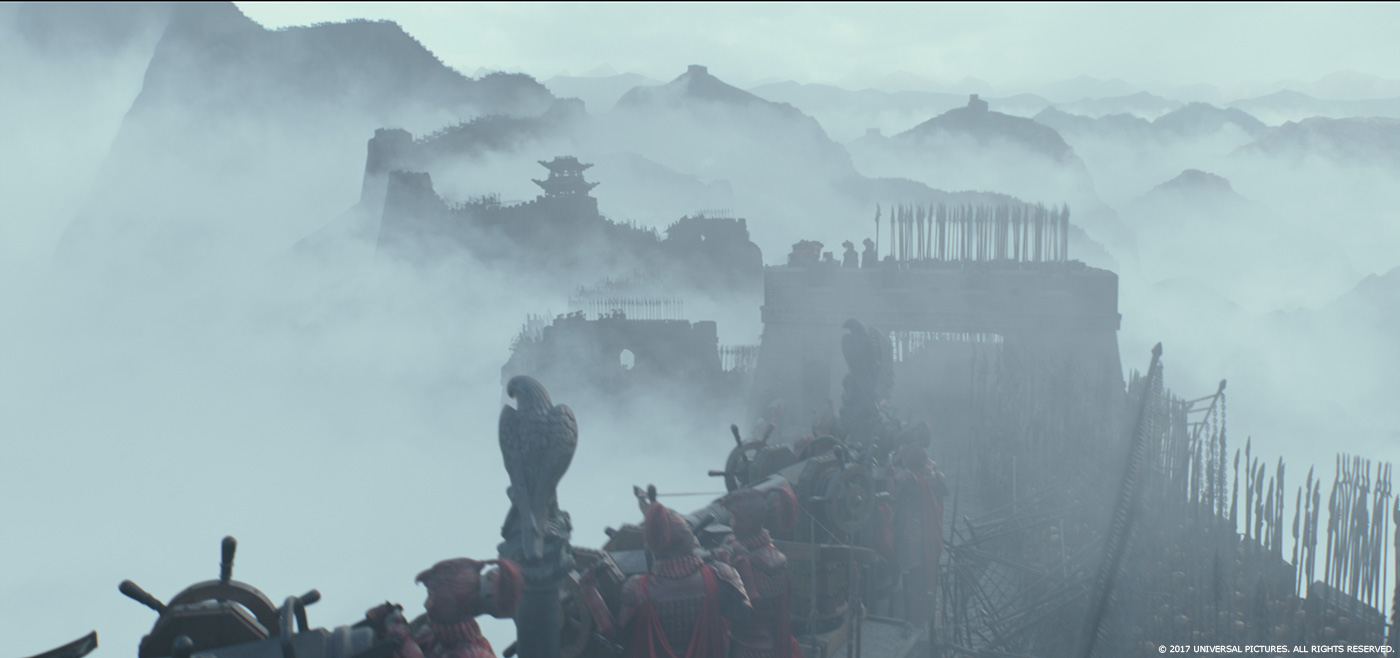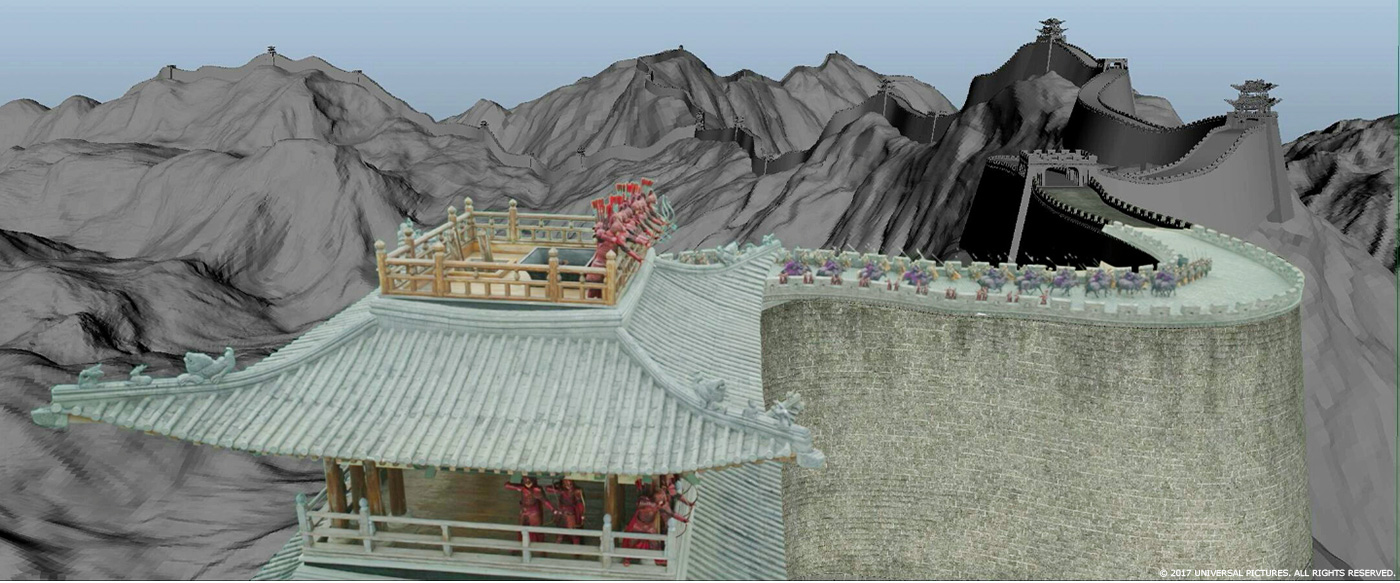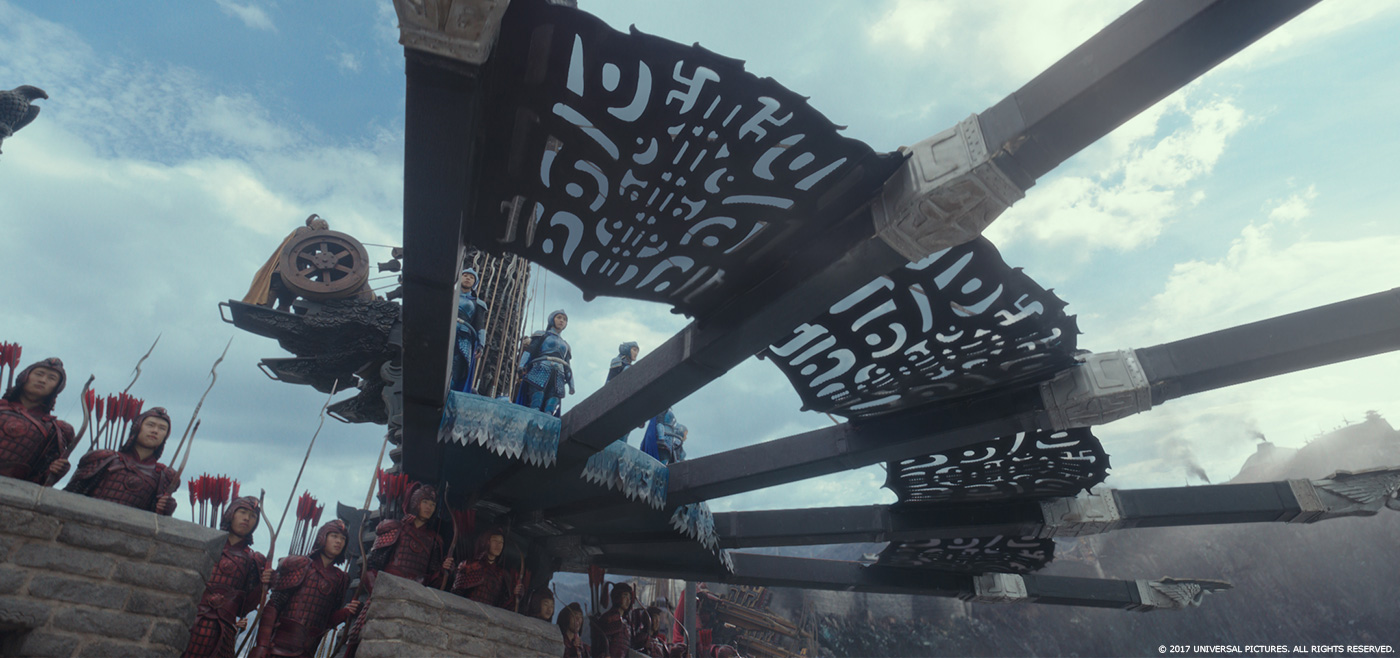Jay Mehta started his career at Rhythm & Hues in 2007, where he worked on projects such as THE GOLDEN COMPASS, THE INCREDIBLE HULK, SNOW WHITE AND THE HUNTSMAN and LIFE OF PI. He then joined Base FX in 2014 and worked on projects like AGENT CARTER, BLACK SAILS and EQUALS.
What is your background?
I was fortunate enough to start my career with Rhythm & Hues, Mumbai, as a Roto and Paint artist. In due course of time I moved on to Compositing and more leadership roles. After nearly 8 years at Rhythm & Hues, I got in touch with Chris Bremble, CEO Base FX, to explore similar opportunities at Base FX. Though I was still very skeptical to move to China, but eventually I decided to take it up, and joined Base FX in June 2014.
How did you and Base FX got involved on this show?
In 2014, ILM Singapore shared the details of their next project – a high profile Chinese-Hollywood collaboration. After multiple rounds of discussions, Base FX was onboard for this project. I got involved a little later on THE GREAT WALL as I was still wrapping up my previous project.
How was the collaboration with director Zhang Yimou and VFX Supervisor Phil Brennan?
Zhang Yimou is a highly reputed and acclaimed director in China and known for his epic scale and hyper-realism. There were no subtle effects, his response to most of the stuff in the film was “add more” – be it smoke, fog or soldiers. When Phil and Zhang Yimou visited Base FX, Phil invited me to be a part of dailies and it was very evident that Zhang Yimou knew all along what he wanted. His feedback was clear and to the point. It was a great honor to be a part of this epic journey.
What were their approaches about the visual effects?
Zhang Yimou always wanted the movie to be a visual spectacle. His preferences leaned towards very saturated and vivid look, which was also visible in the principle photography. We had to make sure that the computer generated imagery followed the same lines. A lot of long takes with intense camera move gave a lot of screen time to portray the wall and CG environments. Every single detail had to be perfect in order to get a creative approval.
How did you collaborate with Samir Hoon and the ILM teams?
We were working closely with Jeff Capagreco, VFX Supervisor, ILM Singapore, while Samir Hoon was still on-set during the initial shot and asset ingestion stages. Ben Snow, VFX Supervisor, ILM San Francisco, came on board to supervise the shot production for our work. Ben visited Base FX, Beijing, for a couple of weeks in Feb 2015 to understand the work culture. We used to submit our work for review every night. After finishing the cineSync with Phil every morning, Ben would jump on to a call with us to go over the notes. During the course of the show, Ben was working out of ILM Singapore, which made it easier for us as we were in the same time zone.
What are the sequences made by Base FX?
Base FX was involved in many sequences. A part of the ‘First attack’ – which involved a lot of wall and background extensions, CG crowds and adding a lot of smoke, ‘Training sequence’ – post the first attack where there is a dialogue exchange between William (Matt Damon) and Lin Mae (Tian Jing), part of the ‘Fog battle’ – which involved a lot of roto work as there was always a request of more and more layering of fog, ‘General Shao’s ambush’ – where the Tao Tie sneak up to the wall at night and eventually kill General Shao, ‘Underground Canal Sequence’ – where William, Lin Mae and the team are wheeling the captured Tao Tei on a cart as a bait for killing the Queen.
Apart from these major sequences, Base FX worked on a lot one off shots/sequences like – the big spectacular crane up reveal of the wall when William and Tovar (Pedro Pascal) first arrive at the wall, the sequence of William shooting the teacup to prove his marksmanship, shots with the captured Tao Tei in cage near the wall and at the Emperor’s Palace.
How did you work with the art department to recreate the Great Wall?
Most of the concept work was done at ILM and then passed on to us, but there were cases where we had to jump in and worked on the concepts as we were the only vendors working on the sequence like – during the training sequence, which is right after the first battle, we had to add a lot of blood stains, scratch marks on the wall and a lot of debris on the valley floor. All the necessary references and directions were passed on by Ben after discussing the same with Phil.
Can you explain in detail about the creation of The Great Wall and the huge environment around it?
The humongous assets of the wall and its surrounding environment were created at ILM and passed on to us. As most of the shots required the wall and environment extension, we had to come up with approaches to handle and efficiently use these massive assets.
The wall asset was delivered to us as a nested assembly with the texture map resolutions ranging from 4k-16k. Since there were a lot of shots which were close-ups we had to come up with custom tools for automating Level of Detail (LOD) based on the camera distance. Along with the wall asset there were a lot of prop and soldier assets, which were used to populate the wall based on the shot requirement.
The environment asset was delivered in two parts – the valley, which was completely barren and made up of dark volcanic rocks and the outer valley, which was the area behind the wall, a vast expanse of colorful mountains and vegetation. These assets were ingested to work with our internal pipeline and processed in Isotropix Clarisse for the final renders. There were times when we had to come up with custom shaders and approach to be in sync with the final look.
There were a lot of shots that required asset modification. In General Shao’s ambush sequence, we refurbished the original wall and environment asset to generate a section of the wall, which was far away from the main sections.
What was the real size of the sets?
There were two wall sets, which were built in Qingdao, China. One was around 400 feet long and 15 feet tall, enclosed inside a greenscreen container wall. The other set was around 100 feet long and 30 feet tall.
Which part of the Great Wall was the most complicated to create and why?
That’s a tricky question. Almost every shot had its own challenges as there were only two sets built and as per the requirement we had to show that action is happening across the wall’s entire length. So we had to constantly refurbish the asset based on the story point and achieve a seamless integration with the set.
How did you multiply the extras to create the huge Chinese army?
Most of the crowd shots which were done at Base FX had specific formations and minor movements. As the complexity of the crowd was not as demanding, we came up with a particle based instancing system to generate CG crowd. Animation team created a lot of different poses for different soldiers and added a control to added minor variation on the fly. Multiple low res versions of soldiers and prop assets were made for automating LOD.
Based on every sequence we created presets for the army and props, which would be a starting point on an individual shot. Since we were modifying the wall asset so frequently, the artist had to tweak the setup to make it work in a given shot.
How did you handle the army animation?
There were very few shots that required specific animation for the CG army. We had received motion capture data for the soldiers. Animators spent some time processing the data and passed on to the crowd TDs. CFX artists did a series cape simulation varying the intensity and the direction of wind. These simulations were randomized by the crowd TDs to get a better match with capes of the actors in the plate.
Can you tell us more about the blue army that jumps from the top of the Wall?
Blue army (crane soldiers) is a team of highly skilled female acrobat warriors who are lead by Lin Mae. They have ring attached to their waist, which is connected to a rope, controlled by the yellow soldiers (tiger soldiers) on the platforms. Crane soldiers jump off the platform with a single or couple of lances and as they reach near the bottom of the wall, they stab the Tao Tie in their eye (which is the only way to kill them).
All the lances were added in post and sometimes it also posed a problem as their hand movements were such that they would stab themselves. In those cases we had to cheat either the hand movement or the angle of the lance to make the action more realistic.
How did you create the creatures, the Tao tie?
Tao Tie’s asset was created at ILM and then passed on to us. After ingesting the asset into Base FX’s pipeline, we did a few rounds of look development to match it closer to the look achieved by ILM. Since there were a few really tight close-ups, we had to modify and bump up the texture resolution.
Zhang Yimou was also looking for certain characteristics in Tao Tei renders – amount of wetness inside the mouth and sheen on the body, subtle color variations on different parts of the body, which had to be maintained in all lighting conditions, the amount of specular highlight on the fur and its grooming, amount of drool inside the mouth and good visibility of the grooves on the skin. We made sure that we had the right tools to address these notes quickly. There was a very thin line as to where the effect would be too much or too less.
Can you tell us more about their rigging and their animation?
Tao Tie rig was also included in the asset package that we received from ILM. But since ILM uses their proprietary softwares for rigging, not all the controls were passed on. For the missing controls, ILM sent us a references to create the blend shapes and muscle systems.
Animating the Tao Tei always posed a challenge because of its anatomy. There were a lot of references that we received from ILM of real life creatures, but due to the unusual placement of the eye, it was quite tricky for the animation team, especially when they had to show some expressions. Every animator spent some time to understand the basic cycles, actions and get familiarized with the anatomy before they could jump on to the shot. We had to make sure that the movement of the body, snapping of the jaws and movement of the tail does not look dog-like.
Another challenge for the animation team was the shots with the Tao Tei in the cage. In some of the shots, there was a practical cage, which was moved with rigs. The animators had to make sure that movement of the cage is matched perfectly. It was tricky as sometimes the cage would move slightly but we were expected to show maximum aggression.
Did you share assets with ILM?
Yes, all the assets were created at ILM and then sent to us. There were a few sequence specific assets that were created at Base FX.
What was the main challenges and how did you achieve it?
To meet with Zhang Yimou’s expectation was the main challenge. In a more generic action movie you will find quick cuts and the effects which are more photoreal. On this project there were a lot of long shots and everything had to go up a notch or even two folds at times. There were certain creative aspects that had to perfect.
I still remember the notes that received on the teacup shot right before it is hit by the arrow – we had specific notes for every drop of tea as it runs down inside the empty cup, the amount of glossiness inside and on the rim. He had this exact vision for this shot and made sure we achieved that.
Was there a shot or a sequence that prevented you from sleep?
There are definitely a lot of shots in that category. The scope of work was so massive that everything piled up at a quick pace. Thanks to all the great artists at Base FX and the support received from Ben Snow and the ILM team that we were able to work through those challenges.
What do you keep from this experience?
Good memories working with the talented crew at Base FX. I’m really proud of the work that we have achieved.
How long have you worked on this show?
Close to 16 months.
How many shots have you done?
About 460 shots.
What was the size of your team?
Around 350+ artists and production staff across the three facilities of Base FX in China.
What is your next project?
Not sure if I am at the liberty to announce that at the moment.
What are the four movies that gave you the passion for cinema?
Another tricky question!! There are definitely a lot more than four movies. If I have to name just four then it would be THE ABYSS, TERMINATOR 2: JUDGEMENT DAY, JURASSIC PARK and THE SHAWSHANK REDEMPTION.
A big thanks for your time.
// WANT TO KNOW MORE?
– Base FX: Official website of Base FX.
© Vincent Frei – The Art of VFX – 2017











Fantastic works Jay!!